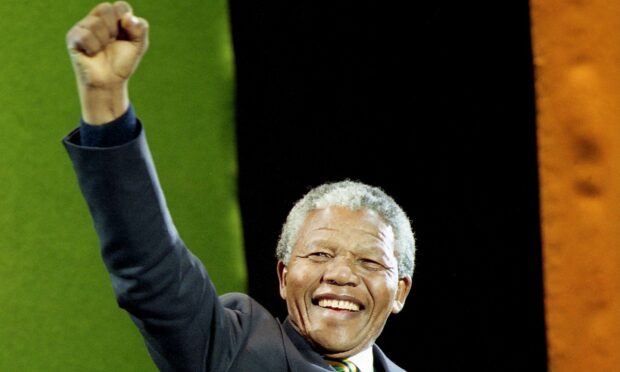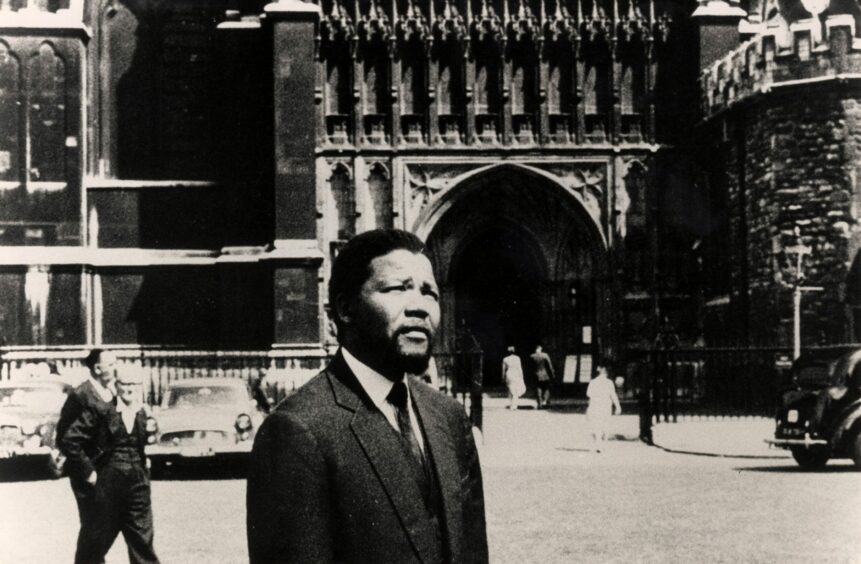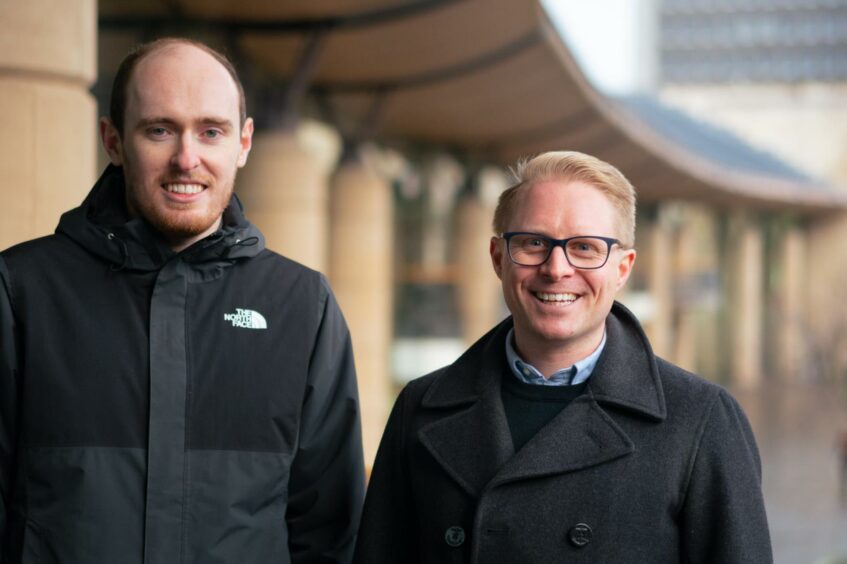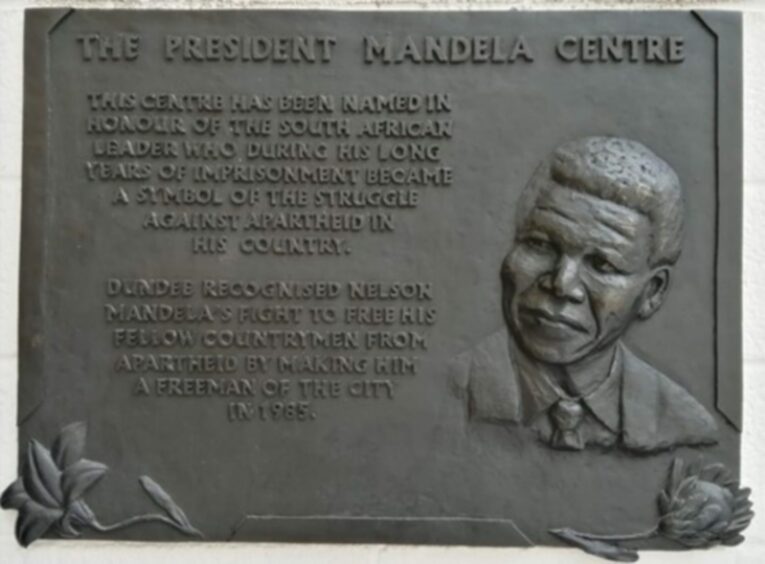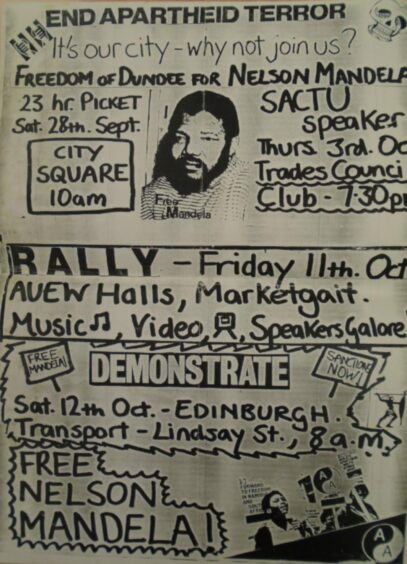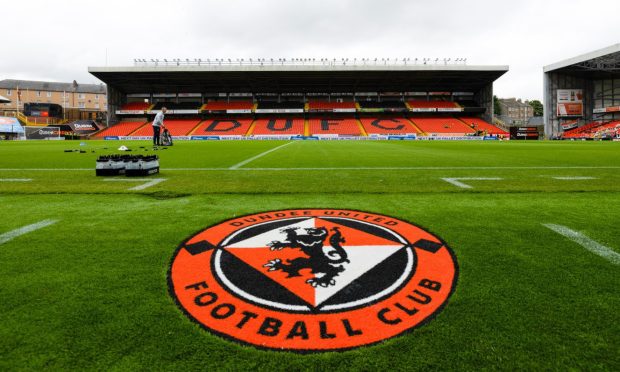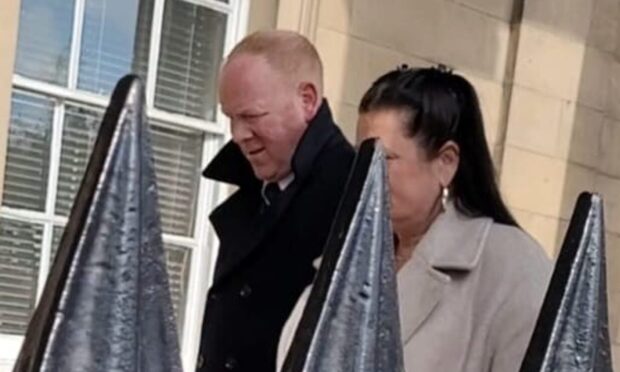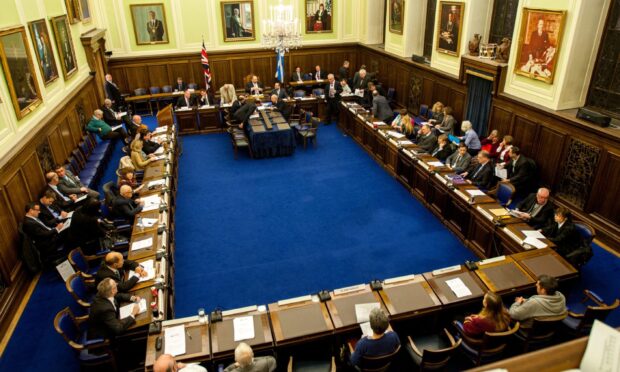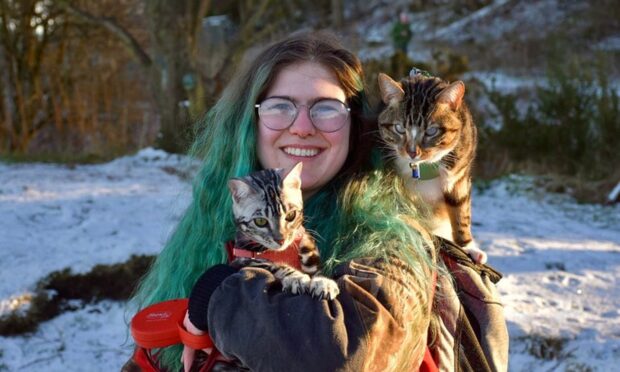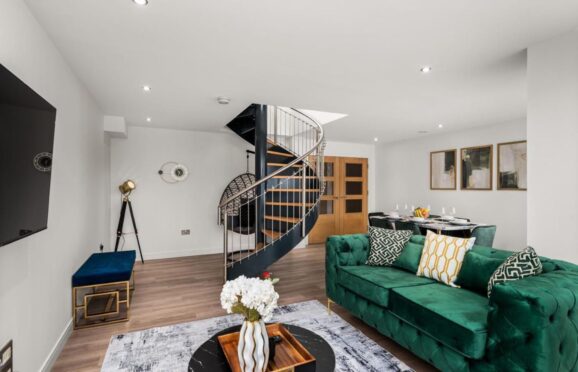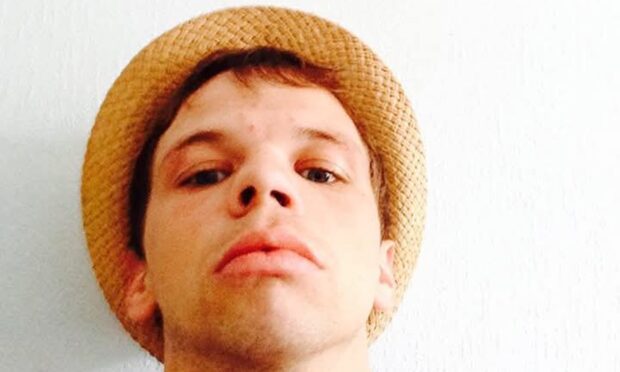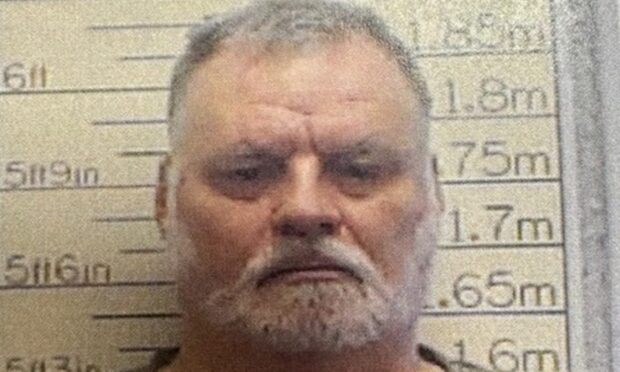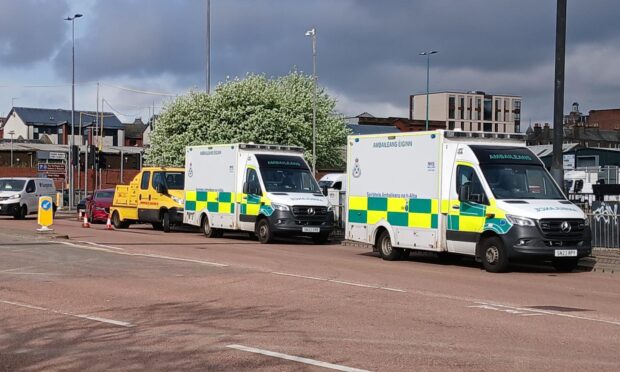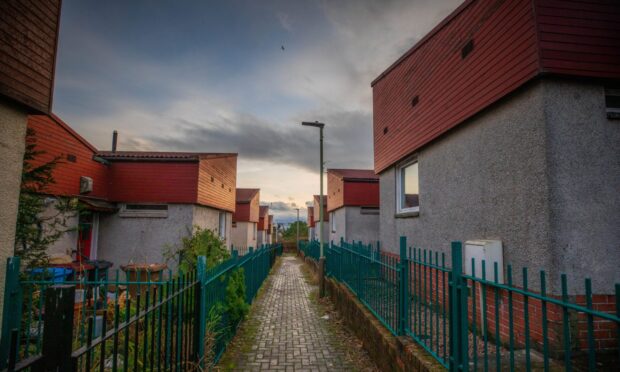Dundee’s support in campaigning to free Nelson Mandela during South Africa’s apartheid years in the 1970s and 1980s is being explored in a new exhibition. Michael Alexander spoke to organisers who’d like to hear memories from the time.
Nelson Mandela was still languishing in a cell in Pollsmoor Prison, South Africa, when, on October 31 1985, he was granted the Freedom of Dundee.
Dundee city’s Labour group leader Ken Fagan moved that the freedom be granted to the political prisoner after 4,000 people in Dundee signed a petition which was backed by anti-apartheid protest rallies in the city.
It came four years after Glasgow became the first city in the world to make him a freeman in 1981 with eight other UK cities and regions following suit in the 1980s.
Understanding
Newspaper reports of Dundee’s decision record Fagan’s view that “there was no more distinguished person in the world than Mandela, who had become a symbol of hope and strength”.
Lord Provost Tom Mitchell said giving the freedom would help the council and Dundee people to better understand what was going on in South Africa.
However, at a time when some saw Mandela as a freedom fighter and others viewed him as a terrorist, the Dundee vote was not without controversy as it went through by 29 votes to 13.
The freedom was eventually awarded “in recognition of his long years of imprisonment as a result of his fighting for freedom from apartheid for his fellow black citizens of South Africa; of the symbol which he has become throughout the world in the campaign to change the South African Government’s repressive and racist policies; and in testimony of the esteem in which he is held by the councillors and citizens”.
Twelve years later in 1997, Dundee’s Wellgate complex comprising the Steps Theatre, Central Library and conference rooms were named the President Mandela Centre. There is still a plaque in the library commemorating the fact.
Seeking anti-apartheid memories
Now, the organisers of a new exhibition showcasing Dundee and Scotland’s contribution to the global struggle against apartheid South Africa are seeking participants to come forward with their memories of involvement in either Dundee’s, or other Scottish cities, anti-apartheid groups.
An exhibition in the Central Library, running from April 28 until May 20, will tell a part of this story.
But Drs Matt Graham (University of Dundee) and Christopher Fevre (University of the Free State), who are experts in South African political history, would also like to hear recollections and memories as part of ongoing research.
“The exhibition came about from a conversation Matt and I had in a pub,” explains Chris.
“We were just chatting about anti-apartheid, that was the research we were doing, and we said ‘I wonder what Dundee’s links are to this’?
“Because basically everywhere had an anti-apartheid group or some sort of organisation.
“So we decided to do some background research and discovered that Dundee was one of eight UK cities to give Mandela Freedom of the City in the mid-80s.
“That peaked our interest, and then we started doing research into the links between Dundee and Nelson Mandela, but also Scotland and the anti-apartheid struggle.”
Chris said the exhibition, with funding from Dundee University, will comprise 12 A1-sized boards on easels, supported by booklets, which chart Mandela and the anti-apartheid struggle.
Raising awareness
Matt said many Dundonians are vaguely aware of the city’s connections.
The Mandela Freeman cities were Dundee, Aberdeen, Glasgow, Midlothian, Greenwich, Hull, Islwyn, Newcastle upon tyne and City of Sheffield.
But now the organisers want to understand more about why Dundee took this decision at a time, during Thatcherism, when it would have been seen as a “quite a bold move”.
“The other connection is that the University of Dundee holds the Peto Collection which is all these images that photographer Michael Peto took from the 1950s to 1970s,” explains Matt.
“He took photos of Mick Jagger and the Beatles and whatnot. But he also took photos of Nelson Mandela and also the then ANC president in exile Oliver Tambo. These are the rarest photos of the two of them anywhere in the world.
“To the extent that I was doing some work in South Africa at the Nelson Mandela Foundation in Johannesburg. They were like ‘you are from the University of Dundee? We have pictures on loan from the University of Dundee here!’
“So basically we are joining these various dots. We are not randomly jumping on the Mandela zeitgeist. There are tangible connections to the city, to the university.”
Left-wing traditions
Putting Dundee’s actions into context, it was symptomatic of the leftist Labour council at the time, which also had strong connections to the Scottish Labour Party and similar actions it had been conducting in Glasgow.
There was a connection in terms of solidarity and the way they could make a symbolic gesture.
Matt says that “in realty” it has to be acknowledged that the Freedoms granted did not lead to Mandela being released.
However, the point was it showed that people thousands of miles away genuinely cared about oppressed people.
There were also echoes of Dundee’s internationalist stance, including those that rallied during the Spanish Civil War.
There are no direct quotes recorded from Mandela acknowledging his thanks to Dundee.
However, a Dundonian delegation met with Mandela when he visited Glasgow in 1993 to confer the freedom of the city in person.
“In 1993 Mandela came to Glasgow for a ceremony and all of the cities that had given him Freedom of the City were in attendance at this ceremony,” says Chris.
“Each city was given five minutes with Mandela to present them with the Freedom scroll.
“When I was in South Africa I went to the Nelson Mandela Foundation and the Dundee Freedom of the City Scroll is still there in his collection, so he kept it over these years.
“I don’t think we have a direct quote from him about Dundee but he does talk about Scotland and the importance of the giving of these Freedoms to boost his morale.
“He was being told about these things in jail.”
Generation gap
Chris said the aim of the exhibition is to create a broader interest in the history but also to encourage people to come forward and tell the story of what they remember about the anti-apartheid struggle.
Apartheid is of course now history.
But with the spotlight more recently on wider racism and Black Lives Matter protests, Matt says it’s interesting to hear the perspective of modern day students who can’t quite believe apartheid was ever possible.
“I do a course in South African history at the university, and a lot of these students were generally born in the 2000s now,” he says.
“Part of it is they can’t quite believe that something so abhorrent was still in existence a few years before they were born.
“Also how did the apartheid state get away with it given the level of criticism and disgust at the system that was in place in South Africa.
“But one thing I’ve found over the last few years when teaching it is students are really interested in the concept of social justice and also in thinking about the world around them and the structures that have actually inhibited people fulfilling their human rights, democracy and social justice.
“I think they find it quite an interesting topic to look at.
“But equally it’s quite hard because they know for them it’s very much their history whereas I was born when apartheid was still ongoing but becoming towards the end.
“There is a generational divide.
“But the fact that ordinary people in Dundee or Fife would actually get involved to protest against this form of governance and try and make change perhaps gives them hope for other causes as well.
“Again I’m not going to claim that the Scottish anti-apartheid movement led to the end of apartheid, because it didn’t.
“But it played a part in building up that protest, built up public awareness of just what the system was doing.”
How to get in touch with memories
Reminiscences can be sent to Dr Matt Graham, University of Dundee, m.v.graham@dundee.ac.uk or Dr Christopher Fevre, University of the Free State christopher_fevre@hotmail.co.uk
The free exhibition, which also includes a short film made by Alistair Heather, runs at the Dundee Central Library from April 28 to May 20.
A launch event will be held at the Steps Theatre on Thursday April 28 between 6pm and 7.30pm.
This will include a Q&A with two former British anti-apartheid activists.
Drs Graham and Fevre, will also give a public talk on anti-apartheid activism history at the Steps Theatre between 11.30am and 1pm on May 7.
Launch night and talk places can be reserved on the exhibition’s dedicated Eventbrite page.
